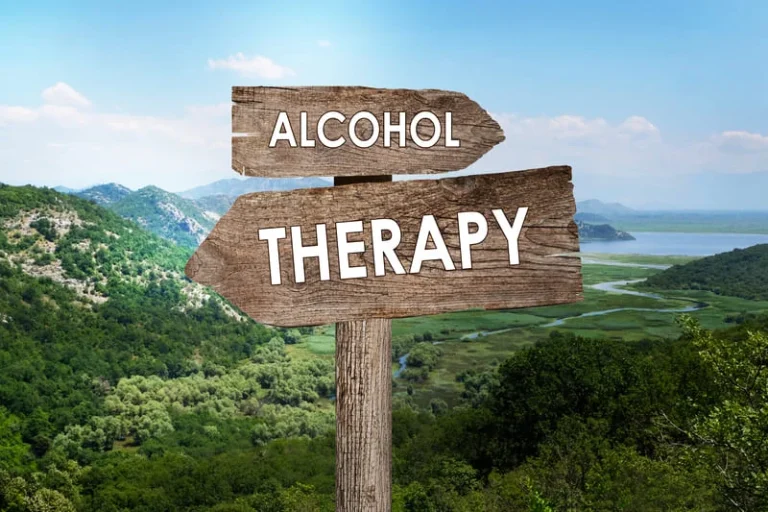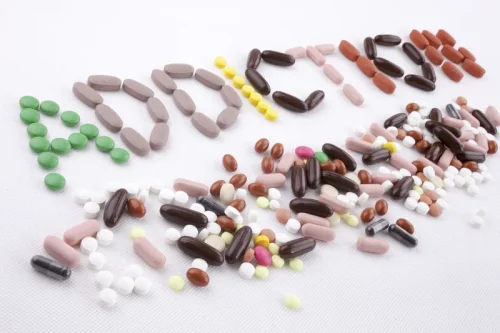
Ecological momentary assessment [44], either via electronic device or interactive voice response methodology, could provide the data necessary to fully test the dynamic model of relapse. Ideally, assessments of coping, interpersonal stress, self-efficacy, craving, mood, and other proximal factors could be collected multiple times per day over the course of several months, and combined with a thorough pre-treatment assessment battery of distal risk factors. Future research with a data set that includes multiple measures of risk factors over multiple days could also take advantage of innovative modeling tools that were designed for estimating nonlinear time-varying dynamics [125]. These strategies also focus on enhancing the client’s awareness of cognitive, emotional, and behavioral reactions in order to prevent a lapse from escalating into a relapse. The first step in this process is to teach clients the RP model and to give them a “big picture” view of the relapse process.

Exercise deprivation increases negative mood in exercise-addicted subjects and modifies their biochemical markers
Despite significant empirical support for nonabstinence alcohol interventions, there is a clear gap in research examining nonabstinence psychosocial treatment for drug use disorders. Future research must test the effectiveness of nonabstinence treatments for drug use and address barriers to implementation. Unfortunately, there has been little empirical research evaluating this approach among individuals with DUD; evidence of effectiveness comes primarily from observational research. Participants with controlled use goals in this center are typically able to achieve less problematic (38%) or non-problematic (32%) use, while a minority achieve abstinence with (8%) or without (6%) incidental relapse (outcomes were not separately assessed for those with AUD vs. DUD; Schippers & Nelissen, 2006). A key feature of the dynamic model is its emphasis on the complex interplay between tonic and phasic processes. As indicated in Figure Figure2,2, distal risks may influence relapse either directly or indirectly (via phasic processes).
Reactivity to written mental arithmetic: Effects of exercise lay-off and habituation
- Those in addiction treatment or contemplating treatment can benefit from this aspect of relapse prevention.
- A relapse can be caused by a cascading effect that includes several issues that occur before you begin using again, according to Marlatt.
- This success can then motivate the client’s effort to change his or her pattern of alcohol use and increase the client’s confidence that he or she will be able to successfully master the skills needed to change.
- Additionally, individuals are most likely to achieve the outcomes that are consistent with their goals (i.e., moderation vs. abstinence), based on studies of both controlled drinking and drug use (Adamson, Heather, Morton, & Raistrick, 2010; Booth, Dale, & Ansari, 1984; Lozano et al., 2006; Schippers & Nelissen, 2006).
- Shaded boxes indicate steps in the relapse process and intervention measures that are specific to each client and his or her ability to cope with alcohol-related situations.
- Expectancy research has recently started examining the influences of implicit cognitive processes, generally defined as those operating automatically or outside conscious awareness [54,55].
Consequently, it may be possible that abstinence on its own, when it is not part of an intervention that teaches effective coping skills for dealing with withdrawal, cravings, or lapses, might cause more harm than good. Therefore, understanding potential adverse effects of these abstinence periods, and even abstinence as an approach in and of itself, irrespective of time frame, is vital before its viability as a potential intervention can be properly weighed. Despite the empirical support for many components of the cognitive-behavioral model, there have also been many criticisms of the model for being too static and hierarchical.

Relapse prevention
- As the foregoing review suggests, validation of the reformulated RP model will likely progress slowly at first because researchers are only beginning to evaluate dynamic relapse processes.
- Among social variables, the degree of social support available from the most supportive person in the network may be the best predictor of reducing drinking, and the number of supportive relationships also strongly predicts abstinence.
- Marlatt, in particular, became well known for developing nonabstinence treatments, such as BASICS for college drinking (Marlatt et al., 1998) and Relapse Prevention (Marlatt & Gordon, 1985).
- Second, relapse refers to an individual losing control over a behavior and reverting to earlier patterns of behavior after a period of abstinence.
- Given data demonstrating a clear link between abstinence goals and treatment engagement in a primarily abstinence-based SUD treatment system, it is reasonable to hypothesize that offering nonabstinence treatment would increase overall engagement by appealing to those with nonabstinence goals.
It can impact someone who is trying to be abstinent from alcohol and drug use in addition to someone trying to make positive changes to their diet, exercise, and other aspects of their lives. Questionnaires such as the situational confidence test (Annis 1982b) can assess the amount of self-efficacy a person has in coping with drinking-risk situations. Those measures do not necessarily indicate, however, whether a client is actually able or willing to use his or her coping skills in a high-risk situation.
The neurocognitive correlates of non-substance addictive behaviors
Second, the likelihood of abstinence following a behavioral or pharmacological intervention can be moderated by genetic influences on metabolic processes, receptor activity/expression, and/or incentive value specific to the addictive substance in question. Third, variants implicated in broad traits relevant for addictive behaviors–for instance, executive cognitive functioning abstinence violation effect (e.g., COMT) or externalizing traits (e.g., GABRA2, DRD4)–could influence relapse proneness via general neurobehavioral mechanisms, irrespective of drug class or treatment modality. Some researchers propose that the self-control required to maintain behavior change strains motivational resources, and that this “fatigue” can undermine subsequent self-control efforts [78].
Addiction Biology
As a result of stress, high-risk situations, or inborn anxieties, you are experiencing negative emotional responses. Emotional relapses can be incredibly difficult to recognize because they occur so deeply below the surface in your mind. In other words, abstinence violation effects make a single lapse much more likely to turn into a full return to a full relapse into negative behavioral or mental health symptoms. In the context of addiction, a breach of sobriety with a single drink or use of a drug has a high likelihood of a full relapse. Triggers include cravings, problematic thought patterns, and external cues or situations, all of which can contribute to increased self-efficacy (a sense of personal confidence, identity, and control) when properly managed.
Decoupling Goal Striving From Resource Depletion by Forming Implementation Intentions

First, withdrawal symptoms refer to unpleasant emotional states that are experienced when a behavior is abruptly ceased. If an individual is regularly or habitually engaging in a behavior without restriction, it is possible that any latent withdrawal symptoms which might otherwise arise under abstinence https://ecosoberhouse.com/ conditions might be masked. Second, relapse refers to an individual losing control over a behavior and reverting to earlier patterns of behavior after a period of abstinence. If an individual does not try to abstain from the behavior in the first place, relapse, by definition, cannot be observed.

The effect of brief exercise cessation on pain, fatigue, and mood symptom development in healthy, fit individuals
- Consistent with the broader literature, it can be anticipated that most genetic associations with relapse outcomes will be small in magnitude and potentially difficult to replicate.
- In the multifaceted journey of overcoming addiction and living a healthier life, individuals often encounter a psychological phenomenon known as the abstinence violation effect (AVE).
- Given the rapid growth in this area, we allocate a portion of this review to discussing initial evidence for genetic associations with relapse.
- According to this metaphor, learning to anticipate and plan for high-risk situations during recovery from alcoholism is equivalent to having a good road map, a well-equipped tool box, a full tank of gas, and a spare tire in good condition for the journey.
- Recognizing the factors that contributed to the lapse, such as stressors or triggers, helps individuals to develop strategies and techniques to navigate similar challenges in the future.
It sounds counterintuitive, and it is, but it is a common thought that many people have to recognize to avoid relapse. Celebrating victories is a good thing, but it’s important to find constructive ways to appreciate your sobriety. Marlatt differentiates between slipping into abstinence for the first time and totally abandoning the goal.
Recent Posts
- The Method To Outsource Front-end Growth Efficiently
- “Internet Casinos Con Dinero Genuine En Argentina Top 2024
- Vodka Слоты – Рабочее зеркало сайта, интернет казино на деньги
- En Yüksek Değerli deneme bonus veren siteler Teklifleri
- Mostbet Seyrək 90 Azərbaycanda Bukmeker Və Casino Bonus 550+250fs</tg
Recent Comments
Archives
Categories
- ! Без рубрики
- 1
- 1win Brazil
- 1win India
- 1WIN Official In Russia
- 1win Turkiye
- 1win uzbekistan
- 1winRussia
- 1xbet AZ Casino
- 1XBET AZ Giriş
- 1xbet Casino AZ
- 1xbet Casino Online
- 22bet IT
- Artificial intelligence
- Artificial intelligence (AI)
- Bankobet
- Basaribet
- bizzo casino
- blog
- book of ra
- Bookkeeping
- casino
- casino en ligne fr
- casino online ar
- Cbet GG Cassino
- Cryptocurrency exchange
- Education
- FinTech
- IT Vacancies
- IT Образование
- Kasyno Online PL
- king johnnie
- Masalbet
- Mostbet AZ Casino
- mostbet azerbaijan
- Mostbet Casino AZ
- Mostbet Casino Online UZ
- Mostbet Russia
- Mostbet UZ
- Mostbet UZ Casino
- mostbet uz kirish
- News
- Pin Up AZ
- Pin UP AZ Online
- Pin UP CASINO AZ
- Pin UP Casino Online
- pinco
- slot
- Sober living
- Software development
- sugar rush
- Trading Bot
- Uncategorized
- Финтех
- Форекс Обучение
- Форекс партнерская программа